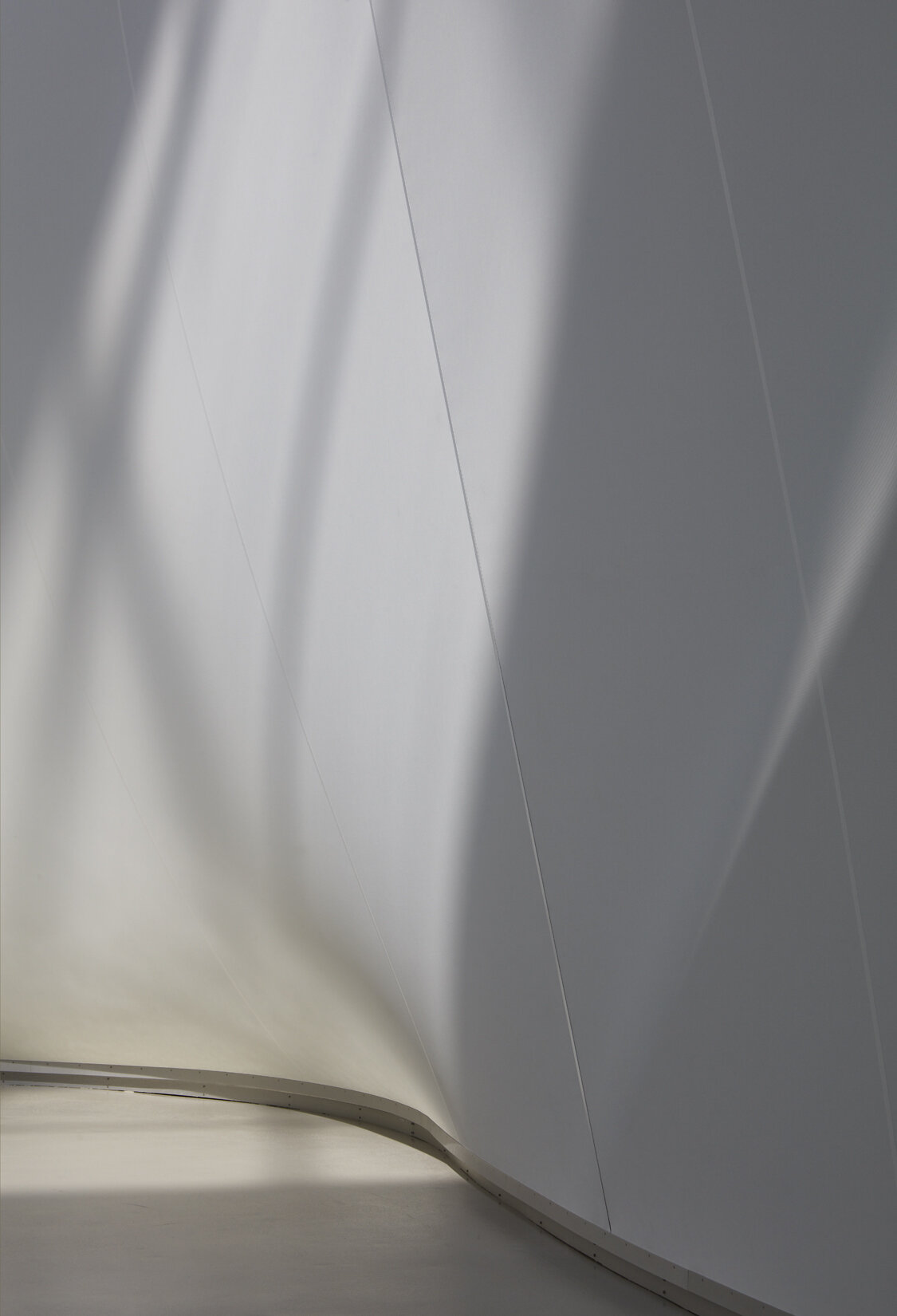Site Specific: Montreal Biodôme
Text and Photography by James Brittain
The Montreal Biodôme in Canada, a museum about the natural world housed inside the old velodrome of the 1976 Olympics, has recently re-opened following an extensive refurbishment by local architecture studio KANVA in collaboration with NEUF Architectes. The photographer James Brittain introduces the history of this remarkable building and presents a selection of his photographs taken in the summer of 2020 following the recent renovation.
JB As commissioned photographers of architecture we live vicariously through the architecture we photograph. So I was very pleased to be hired to record this joyfully complex and thought provoking project in the late summer of last year.
The original building was a velodrome and judo facility for the 1976 Montreal Olympic Games designed by French Parisian architect, Roger Taillibert. Organic concrete structural beams with lateral windows soared over his cycling arena when it first opened - a dramatic ensemble evoking the skeleton and inner workings of a giant flying insect.
Along with the adjacent stadium, the olympic site was an ambitious scheme which went wildly over budget - heightening the need for a successful repurposing once the games were over.
A first remodelling of the velodrome was completed in 1992, when the building re-opened as The Biodôme - a new generation nature museum adopting a more holistic approach to curating animals and plants on show.
Four distinct ecosystems were installed inside the building’s shell for visitors to explore, mimicking the environments of the gulf of the St Lawrence river, the polar regions of the Arctic, the Laurentian forests of Quebec and the tropics of South America. It quickly became a beloved landmark for Montreal families, and one of the most visited exhibition spaces in Canada.
The 1992 iteration was ground-breaking as an interactive exhibit but somewhat clumsy in the arrangement of its architecture. In particular, infrastructure for the new biospheres obscured all but the briefest views of Taillibert’s original.
In 2014, The Biodôme was the subject of a new international competition for further revitalisation, won by Montreal studio KANVA in collaboration with NEUF Architectes. It re-opened to the public in the summer of 2020. KANVA’s design re-imagines the entire Biodôme as a living organism.
At the entrance, you’re greeted by undulating white fabric walls that envelop the concrete bones of the velodrome and wrap around the ecosystems. The walls are translucent and have the feel of a delicate skin. The movement of light and shadow on them adds to the sense of being in a building that’s alive.
From the entrance, you’re led down an intimate pathway into a large central void revealing the drama of Taillibert’s roof. With natural light from above, this space at the heart of the building is a place for pause and contemplation. But it’s also for orientation - all four ecosystems are accessed from here and intriguing hints of the natural world waft in from the sounds of animals and birds beyond.
Innovation has also been applied within the ecosystems themselves. An elevated walkway in the tropical zone provides new views of the treetop canopy. An ice tunnel leads you to the arctic penguins, cooled by heat exchange from the adjacent tropical forest. There’s a grand mezzanine where three of the four ecosystems and the sprawling machinery that enables them, can be seen from above, under the giant swoops of Taillibert’s roof.
The new architecture doesn’t shy away from the difficult questions around wildlife in captivity, nor climate change and our fragile relationship with the natural world. Having the mechanical workings on show is a constant reminder of the artifice of it all. Boundaries between the viewer and viewed are kept playfully in flux. Are we watching the animals, or are they watching us?
The survival of everything inside here is up to us.
















